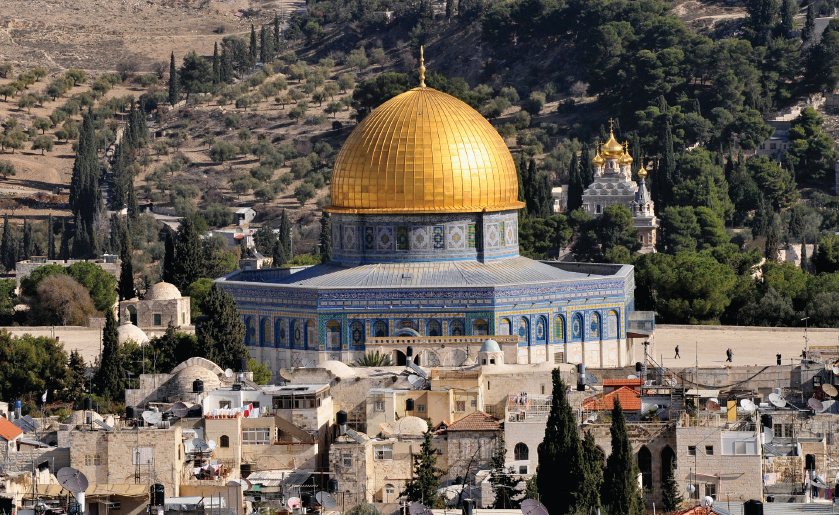Understanding Western Society
Printed Page 212
| > | What were the origins and early impact of Islam? |
IIN THE SEVENTH CENTURY C.E., two empires dominated the area today called the Middle East: the Byzantine-

Dome of the Rock, JerusalemCompleted in 691 and revered by Muslims as the site where Muhammad ascended into Heaven, the Dome of the Rock is the oldest surviving Islamic sanctuary and, after Mecca and Medina, the holiest place in Islam. Although influenced by Byzantine and Persian architecture, it also has distinctly Arabic features, such as the 700 feet of carefully selected Qur’anic inscriptions and vegetal motifs that grace the top of the outer walls (imagebroker.net/SuperStock)